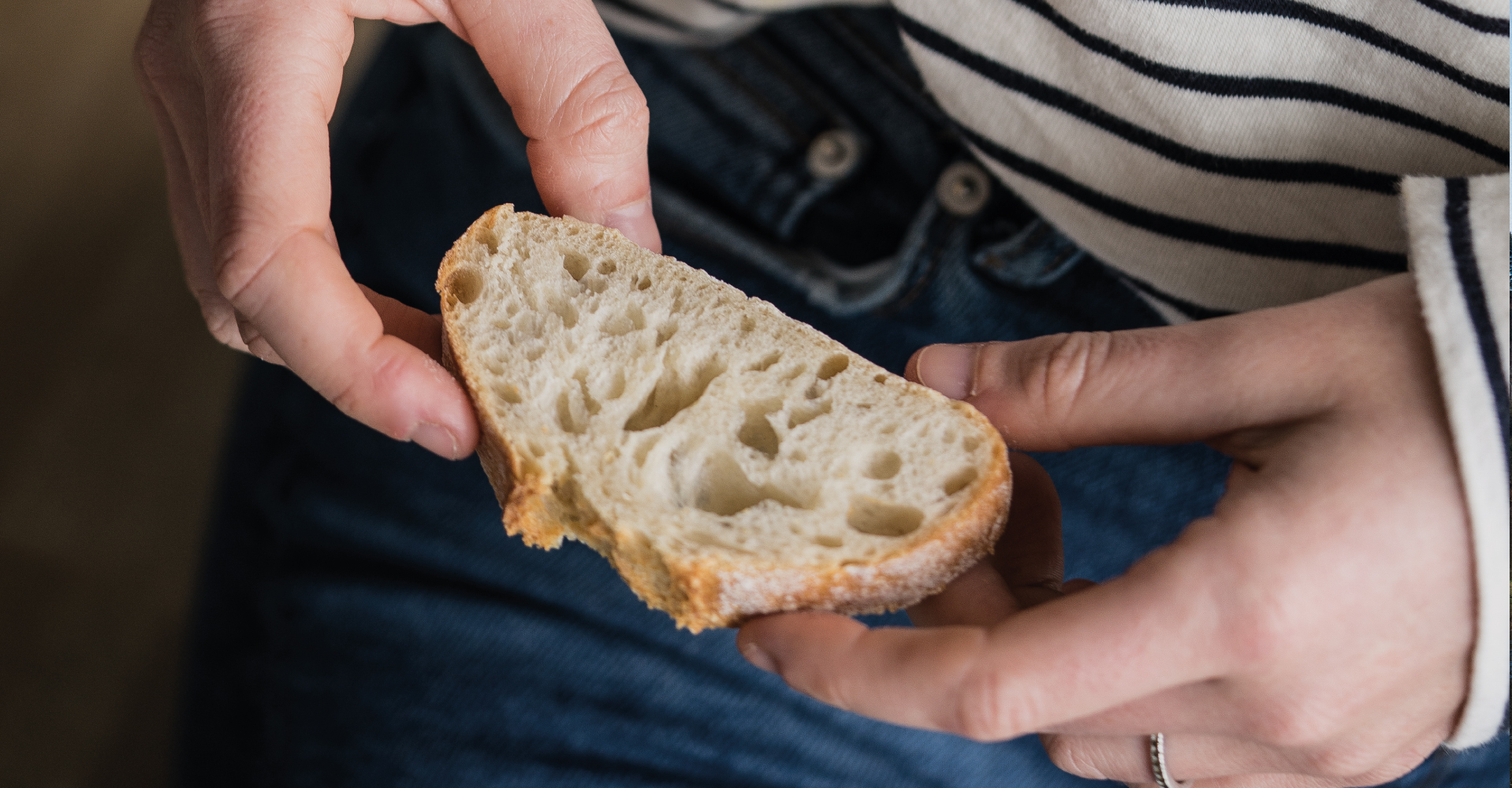07.03.2025
How to Defrost Bread Without Losing Its Texture

Just as time and temperature are key parameters in bread making, we always say that bread making is the art of combining time and temperature. If we want to achieve bread with the same texture and mouthfeel as freshly baked bread, we need to be patient. The most common option is to defrost bread at room temperature, taking anywhere from 30 minutes to an hour depending on the piece. However, realistically, no one has that much time, and when we take the bread out of the freezer, it’s usually to consume it immediately. Therefore, we’ve analyzed different faster methods to find the ideal one.
Effective Methods for Defrosting Bread:
Unlike other frozen foods where it’s not recommended to defrost in the fridge, with cold water, or in the microwave, defrosting bread is a more flexible process. Bread doesn’t carry the same risk of bacterial proliferation as other foods, so defrosting it at room temperature is the most common option.
How to Defrost Bread in the Oven
To achieve a crunchy crust, frozen bread can be placed in a preheated oven at 180-200°C (350-400°F) for 5-10 minutes. This method defrosts the bread using hot air, a process called convection. The convection method circulates hot air inside the oven to defrost the bread more evenly and efficiently.
Defrosting Bread in the Microwave Without Drying It Out
The microwave is not the best method for defrosting bread. We don’t know if anyone has experienced this, but be careful, as bread can catch fire if not done with caution.
The microwave defrosts bread using electromagnetic waves that excite the water molecules within the bread, generating heat quickly. However, this method can cause the bread to become chewy or dry because the heat is distributed unevenly, potentially evaporating too much moisture. To minimize this, it is recommended to:
-
Use the defrost function or heat in short intervals (10-20 seconds) at low power.
-
Cover the bread with a damp cloth or place a cup of water inside the microwave to maintain humidity.
-
For a better texture, it’s preferable to combine the microwave with the oven or a toaster to restore the crispy crust.
Defrosting Bread in an Air Fryer: Step-by-Step
The air fryer has become one of the most popular kitchen appliances in recent years due to its ability to cook more healthily and quickly. Although it’s mainly designed for frying with less oil, why not use it to defrost and reheat bread?
To do so, place the bread in the basket without stacking it, allowing the hot air to circulate well. Heat for 3-5 minutes, depending on the size of the bread; it’s ideal for small or individual portions.
Unlike a conventional oven, the moving air helps prevent the bread from reheating unevenly, allowing for better recovery of its original texture. Plus, it's a quick and efficient method (saving energy compared to using an oven).
Defrosting Bread at Room Temperature: Is It the Best Option?
As mentioned, defrosting bread at room temperature is the most common option, but is it the best one? We say yes. For our type of bread, which is highly hydrated and undergoes double fermentation, this is the best method.
If you want to enjoy bread with the best texture and flavor, the most recommended option for defrosting is at room temperature. This method allows the bread to naturally regain its moisture, preventing it from drying out or becoming chewy, as can happen in the microwave.
How to Properly Defrost Bread at Room Temperature:
-
Remove the bread from the freezer and place it on a rack or a clean surface.
-
Let it rest at room temperature for 30 minutes to 2 hours, depending on the size and thickness of the bread. If the bread is large or in a sealed bag, slightly open the packaging to prevent moisture buildup and to keep the crust from softening.
-
If you desire a crispy crust, once defrosted, you can give it a final touch in the oven or air fryer at 180°C (350°F) for 5 minutes. This way, you'll enjoy bread as if it was freshly baked, without losing its freshness.
Defrosting Bread in the Fridge: Advantages and Disadvantages
The fridge is the recommended defrosting method for any food, but when it comes to bread, we need to consider another key process: starch retrogradation. This happens because the starch molecules, which gelatinized during cooking with heat and moisture, begin to reorganize into a more rigid structure as they cool. This process accelerates with cold, and bread, for example, hardens up to six times faster in the fridge than at room temperature due to this phenomenon. Therefore, considering that bread is microbiologically safe, the fridge is not the ideal method for defrosting because it takes too long and the final result is not the most optimal.
Toasting Frozen Bread: What’s the Best Method?
Unlike the oven, where bread is heated through convection (hot air), with a toaster, we’re dealing with a chemical and physical change on its surface due to the dry heat generated by the electric coils.
The heat from the toaster expels water from the surface of the bread, making it drier and crunchier. At temperatures above 140°C (284°F), the sugars and proteins in the bread react with each other, generating new brown-colored compounds and a characteristic toasted flavor. The heat from the toaster softens the bread’s interior crumb by partially undoing the retrogradation of the starch.
What’s the Best Way to Defrost Bread?
Considering everything mentioned above, we’d say the best method to defrost bread is at room temperature, but if you’re looking for speed, use the oven for a crispy texture, the air fryer for efficiency, or the microwave with caution to avoid texture changes.
How to Freeze Bread to Keep It Fresh
To properly defrost bread, it must first have been frozen correctly. Without a doubt, to achieve an optimal texture after defrosting, it’s essential to have stored it in the best possible way. Here are some tips:
-
Wrap the bread well in plastic wrap, aluminum foil, or a sealed bag to prevent moisture loss.
-
If it’s sliced bread, freeze it in portions so you can take out only what you need.
-
Freeze it as fresh as possible so it retains its flavor and texture when defrosted.
Need Frozen Bread for Your Business? We Can Help!
At OKIN, we use a temperature-controlled freezing system that fully preserves the product without additives or preservatives. This process ensures our breads maintain their freshness, flavor, and original texture, allowing you to enjoy bread as if it was freshly baked after defrosting.
Discover Our Variety of Breads and Find the One That’s Perfect for You!
"This article was written by Goizane Lizarralde, R&D Manager at Okin."









